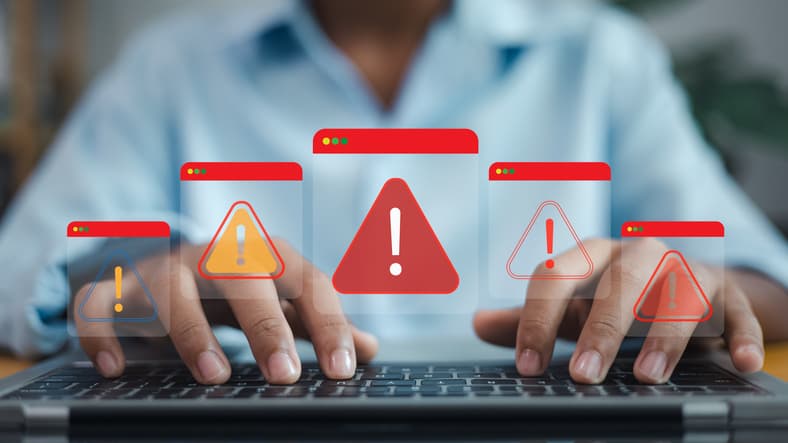
In a fast-paced digital environment, timely patching of software systems is critical to system health, security, and efficiency. Fast patch cycles can optimize performance, reduce costs, and mitigate cybersecurity risks, unlike traditional reactive approaches that rely on infrequent, large-scale clean-ups or repairs.
Let’s explore what fast patch cycles look like, how to set them up, and the multiple advantages they can have on your business costs, security risk reduction, cost compliance, and the overall user experience.
Patch Cycles Defined
A patch cycle is a regularly scheduled process that delivers critical software updates to your systems. These security updates (or patches) fix bugs, address common security vulnerabilities, and improve functionality.
Patch cycles keep software secure and reliable. The updates are applied consistently, often every month. A fast patch cycle reduces your cybersecurity risks by addressing vulnerabilities quickly. Additionally, they stabilize your systems while preventing potential disruptions and unprecedented failures.
Stages of Patch Cycles
Patch cycles often follow a particular procedure with several distinct stages that vary depending on the source. Let’s explore them below:
● At the discovery stage, you create a detailed inventory of all systems, devices, and applications within the organization that require patching. That includes operating systems, software versions, hardware devices, and their locations. Doing this covers all systems, reducing the risk of unpatched vulnerabilities.
● Next is vulnerability scanning, where you assess your systems by scanning for known vulnerabilities and comparing them against reported issues from vendors or security advisories. That helps you identify which patches are necessary to address security risks, such as zero-day vulnerabilities or known exploits.
● After scanning, your business can now classify and prioritize patches based on the severity of the vulnerabilities, system importance, and the potential impact on business operations. Prioritization addresses high-risk vulnerabilities first, minimizing exposure to threats.
● Once you’ve set priorities, you can now acquire the necessary patches from software vendors or distributors. This way, you get access to the correct and latest patches needed for effective remediation.
● But before deploying the patches, test them in a controlled, isolated environment like a lab or software sandbox to ensure they are stable enough not to cause compatibility issues or system failures. Testing ensures patches don’t disrupt business operations because of incompatibility or failures.
● After successful testing, you can now deploy patches to all your target systems. You can do it manually or automatically using patch management software. With timely deployment, you close any security gaps and prevent exploitation of known vulnerabilities.
Benefits of Fast Patch Cycles
Fast patch cycles are preferred because they reduce the risk of system exploitation, costly clean-ups and emergency fixes, or major overhauls. Here are some of the benefits your business may enjoy from fast patch cycles:
Security and Risk Reduction
Fast patching minimizes the risk of cyberattacks, which can be expensive to address after a breach. It reduces the window of opportunity for attackers to exploit known vulnerabilities, including zero-day exploits that require extensive clean-ups.
Using fast patch cycles is also a best practice in cybersecurity by deploying patches as quickly as possible and prioritizing them by risk level. This proactive approach prevents data breaches, protects sensitive information, and maintains compliance with regulatory requirements that mandate timely patching.
Cost Efficiency
Using automated patch management can significantly reduce the time and effort IT teams spend on manually updating systems, freeing them up for strategic tasks and lowering labor costs. It also reduces any cybersecurity risks that may arise from human error, speeding up the patching process.
Additionally, running smaller but frequent updates is less disruptive and cheaper than large, reactive clean-ups after attackers breach your systems. Fast patch cycles close vulnerabilities before attackers exploit them. This helps you avoid the often massive costs of breach remediation, legal penalties, regulatory fines, and reputational damage that can far exceed patch management expenses.
Fast patching also extends the lifespan and performance of your IT systems. Besides running smoothly and optimizing software efficiency, frequent patching of systems can improve hardware performance, delaying the need for costly hardware upgrades or replacements.
Compliance and Legal Considerations
Fast patch cycles reduce the risk of security breaches that can lead to costly fines and legal penalties for non-compliance. Since many regulations require organizations to demonstrate proactive security measures, rapid patching can help you maintain alignment with industry standards such as GDPR, HIPAA, and PCI DSS.
Moreover, it enables you to audit your systems and generate logs with comprehensive documentation, including logs showing when patches were applied and by whom. With these audit logs, your business can pass audits and prove due diligence in cybersecurity efforts to regulators.
System Reliability and User Experience
You can also improve system reliability and user experience by ensuring software and systems remain stable, performant, and free from disruptive bugs or crashes. Your business systems remain reliable, preventing unexpected interruptions that frustrate users and disrupt business workflows.
Patches often include performance enhancements, which speed up operations and improve responsiveness, providing a better experience for end-users. Additionally, they minimize system downtime before issues escalate into failures, helping reduce service interruptions that inconvenience users.
Patches can also ship new functionalities and improvements to user interfaces, improving ease of use and expanding capabilities, which enhances the overall user experience. With reliable systems, fewer disruptions, and smooth user experiences, your business can foster greater user trust and satisfaction, leading to better customer and employee retention.


